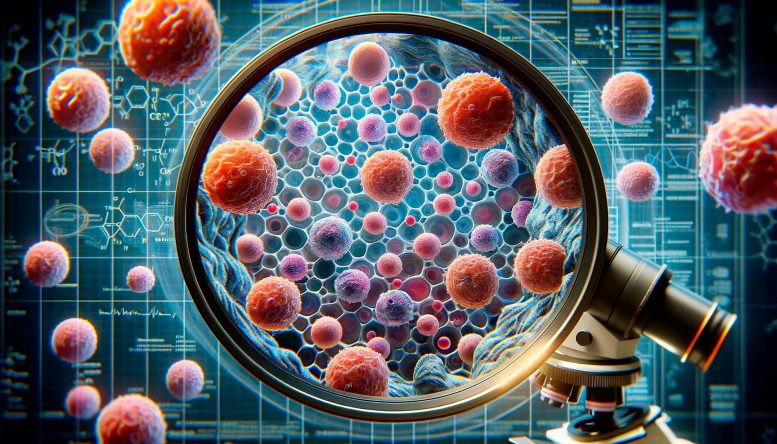Deciphering Cellular Secrets: Unlocking the Potential of Future Cures

An innovative technique has been established at Karolinska Institutet and related organizations that allow for the detailed identification and location of immune cell receptors, revolutionizing our knowledge and treatment of diseases like cancer and autoimmune conditions. The credit goes to SciTechDaily.com.
The developed technique revolutionizes mapping immune cell receptors with tissues, leading advancements in disease research and development of therapies.
At Karolinska Institutet, KTH Royal Institute of Technology, and SciLifeLab, a novel method has been developed which can pinpoint unique immune cell receptors in tissue, as specified in a study published in Science Reports journal. The research team believes that this method will greatly enhance our understanding of the role of immune cells in disease progress and make way for the creation of new treatment for various diseases.
Immune cells like T and B cells play a pivotal role in the body's defense against infections and tumors. Both immune cell types have unique receptors that distinctly recognize different elements of unwanted and foreign bodies like bacteria, viruses, and tumors. Each immune cell and its descendants have its unique receptors, and there are billions of unique immune cells with individual receptors in every human body.
Camilla Engblom. Credit: Johannes Frandsen
A novel method has been developed by researchers at Karolinska Institutet, KTH Royal Institute of Technology, and SciLifeLab, that can not only identify distinct B and T cell receptors but also reveal their location in human tissue.
Camilla Engblom, assistant professor at the Department of Medicine (Solna), Karolinska Institutet, believes that it was impossible to identify both B and T cell receptors in their microenvironments using prior techniques.
Dr. Engblom suggests that this technique has a wide application in the future clinical use.
Jeff Mold. Credit: Sarantis Giatrellis
Dr. Engblom believes that in cancer, this method can help in identifying T cells that potentially attack the tumor and these could then be harnessed for cell therapy against cancer. Another important area is autoimmune diseases, where the immune system attacks healthy tissue. The new technique could be crucial to identify these harmful immune cells, thus increasing the chances of finding what they attack.
Jeff Mold, one of the primary investigators of the research and a scientist at the Department of Cell and Molecular Biology at Karolinska Institutet, considers the new method as a vital step in progress.
Dr. Mold thinks this method's primary benefit is its capability to identify B cells.
According to Dr. Mold, even though T cells have been a trending research subject, B cells have somewhat been disregarded, especially in cancer. However, with this new method, the progression and expansion of B cells in tissue can now be tracked.
The method of spatial transcriptomics was devised initially in 2016 by professors Jonas Frisén from Karolinska Institutet and Joakim Lundeberg from KTH Royal Institute of Technology who also co-authored this study. This was named the “Method of the Year 2020” by the Nature Methods journal.
This new method optimizes the original method that enables researchers to map the immune cells’ receptors and their exact location in tissue, which was previously impossible to do for B and T cells simultaneously.




